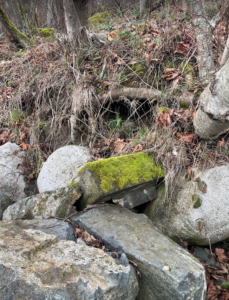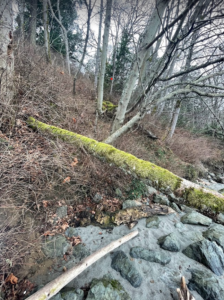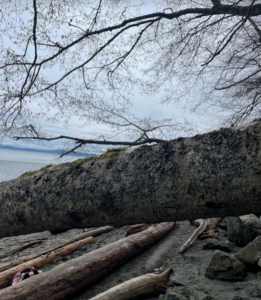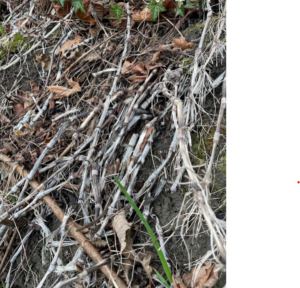The organism which I will study is moss. The three locations I have chosen to observe are roughly the same distance from the water, but spaced out along the edge of the beach where the sand meets the bank of dirt sloping upwards.
- A rock with light, bright green, fluffy moss on the east-facing side and dark green, shorter and less fluffy moss on the west-facing side.

2. A fallen tree which lies towards the water with long dry, white and green moss on the east-facing side and lichen? on the bottom and west-facing side.


3. A small stream with just a trickle of water with moss growing on either side in the dirt, very short and brown moss on the east-facing side and short, green and brown on the west-facing side. There was also dead horsetail? around.



Hypothesis: the direction a surface faces determines how well moss will grow on that surface.
Prediction: Surfaces which face East have better conditions for moss growth.
Potential response (dependant) variables: Length of moss, colour (identify which type of moss and which shade of green is the healthiest), moisture of moss, surface area covered.
Potential explanatory (independent) variable: the direction a surface faces (north, east, south, west, up, down) which is categorical.
